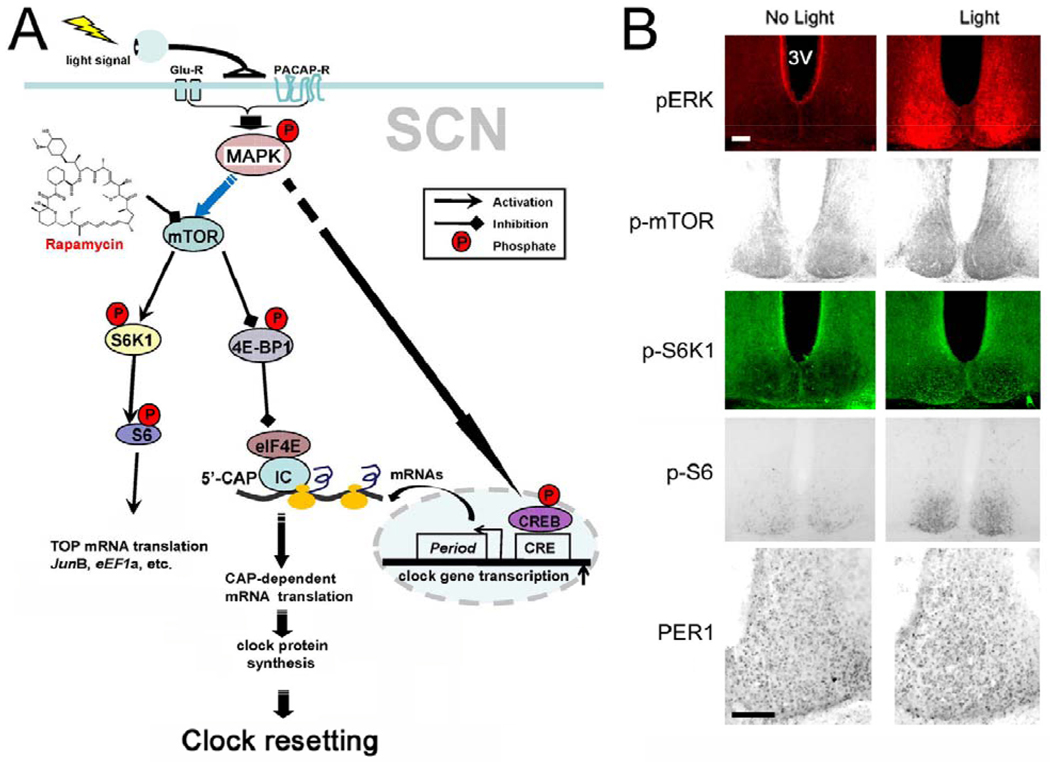Figure 2.
(A) Schematic overview of the mTOR signaling pathway and SCN clock entrainment. Photic input from the retina drives the release of the excitatory amino acid glutamate and the neuropeptide PACAP. Postsynaptic receptors triggers activation of the MAPK cascade, which, in turn, stimulates mTOR signaling. mTOR, functioning within the mTORC1 complex, causes phosphorylation-dependent activation of the p70 S6K/S6 signaling cassette, which stimulates TOP mRNA translation. mTORC1 also triggers the dissociation of 4E-BP1 from eIF4E, which increases CAP-dependent translation. These two arms of the mTOR pathway work in conjunction to enhance the rate of mRNA processivity. In addition to stimulating mTOR, the MAPK cascade also stimulates the expression of immediate early genes, including Period clock genes. Coordinate upregulation of gene transcription and mRNA translation leads to a robust upregulation of PERIOD protein expression. As a state variable of the clock, the induction of PERIOD leads to a rapid resetting of the molecular oscillator. (B) Representative immunohistochemical and immunofluorescence labeling of SCN tissue for light-induced changes in p-ERK, p-mTOR, p-S6K1, p-S6 and PER1. To better visualize PER1 expression, only one SCN is presented. Scale bar: 100 microns, 3V: third ventricle.

